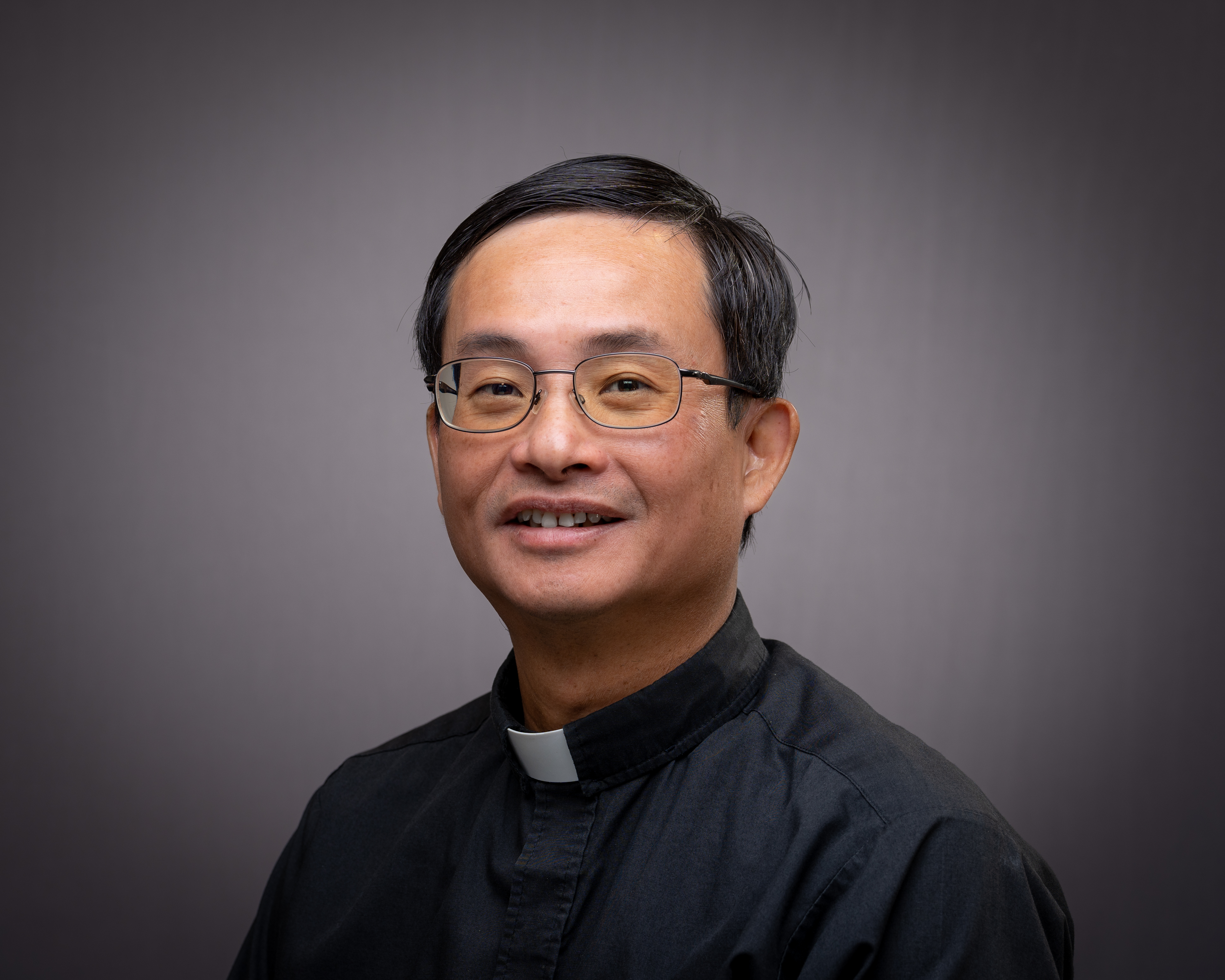
Faculty Spotlight: Fr. Dat Tran, S. J.
What brought you to Santa Clara University?
I was assigned to teach at Gonzaga University after my ordination in 2009. During that time, I stumbled upon an article describing a new age of artificial intelligence (AI). The article raised several critical questions: if an AI causes death, is it considered a crime committed by an AI or a faulty function of a machine? Given the advance in medical technology where artificial parts can replace human parts, at what point is a person still considered a person or a machine? I was intrigued by these questions because they brought forth the ethical issue of advanced technology and moral choices in applying human knowledge. That was why I asked the Provincial of US West Province for a doctoral study in Electrical and Computer Engineering so that I could have a chance to get into an ethical debate with other scientists in the field. I did my doctorate study in Electrical and Computer Engineering at Portland State University from 2013 to 2019. During my doctoral study, I read an article on new emergent devices written by a faculty at Santa Clara University and was fascinated with the potential applications of such nanodevices. My dissertation was about memcapacitive computing, a new emergent nanodevice in reservoir computing. Once I finished my doctoral study, I looked into Santa Clara University, Loyola Marymount University, and Gonzaga University. After a phone interview with Dr. Shoba Krishnan, the Electrical and Computer Engineering department chair, I was so excited to meet with all the faculty in the department for an interview. Santa Clara University is a home for me.
How did you get into electrical engineering?
All my brothers are electrical and computer engineers working in different industries. I am often curious about how things work around me. So pursuing an electrical and computer engineering degree as my career seems natural.
Your research is in neuromorphic computing architectures. Can you describe what this is?
In general, computers do a better job calculating the values than the human brain, such as calculating the value of the Pi square. However, there are specific tasks where we as human beings do better than computers, such as pattern recognition, prediction with incomplete information, or association. In addition, the human brain is very adaptive, flexible, tolerable, and highly energy efficient. Neuromorphic computing (or brain-inspired computing) is alternative computing that mimics the functionality of the human brain. My research focuses on whether we can create hardware with a similar function to the human brain.
What led you to research neuromorphic computing architectures using emergent nanodevices as computing platforms?
The human brain is a massive network of about 86 billion neurons and 1,000 trillion synapses. With the current technology of microchips, it is impossible to implement an artificial model, even a subset of the human brain. However, with the emergence of nanodevice (molecular scale), it is possible to derive a synthetic model of the human brain. The memcapacitor offers a better energy-efficient system and a memristor as a nanodevice. My research aims to answer the following questions: Can we connect memcapacitors to form a network that mimics the function of the human brain? If it is possible, how can we build such networks? How do such networks express the features of the human brain: adaptive, flexible, tolerable, and highly energy efficient?
What makes you excited about the future of electrical engineering?
My research area is just one grain of sand in the vast potential of neuromorphic computing and applications. It is impressive to see how machine learning and artificial intelligence have advanced so much in the past ten years in many applications, such as robotic applications, mobile devices, Internet-of-Things, intelligent appliances, smart sensors, and so on. On the molecular level, scientists explore various possibilities to program enzymes to deliver a drug to cancer cells. The opportunity for new technology is endless.
Another exciting thing about electrical engineering is the ability to work with students, challenge them to think outside the box, inspire them to solve practical and global issues and open new ideas beyond textbooks. It’s always a grace-filled experience for me to advise students on their senior projects. To see how they overcome technical problems with new ideas and, especially, to notice a sparking light in their eyes when they finally understand concepts in engineering courses.
What advice would you give to someone considering getting into electrical engineering?
We choose electrical engineering as our study major, not because it is easy. Indeed, it is more challenging and demanding compared to other majors. Electrical engineering makes sense to us. It kindles something in us. Of course, we must complete a lot of math and the required engineering courses. We may take a challenging course, encounter a problematic professor, or get lost in abstract theories. However, we should not give up the engineering fire in us because that is who we are. The more we learn and are open to questions, the better we understand how things work. I often encourage students in my class to ask many “why questions,” even if we already have an answer—the “why questions” force us to think differently and help us to understand deeply. In addition to technical development, I advise students to develop the other aspects of their human person, such as affection and relationships, by taking a course in music or poetry. Our lives are much more than numbers, theories, and concepts. We need those around us to make us whole and to make our life complete.